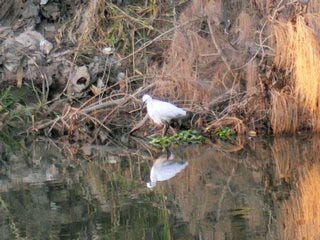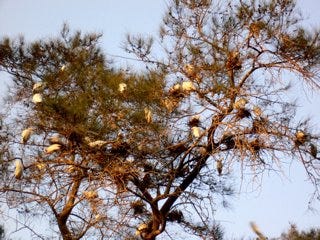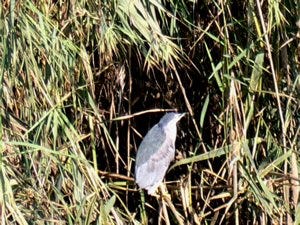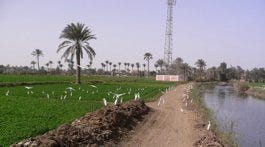Abu Erdan, An Early Terrorist? Not Exactly

I'll bet you never knew that Audubon Society and some of the other conservation groups started with women's hats. Not the connection that most of us make, but that is true. At the turn of the century it was the fashion to decorate women's hats with feathers, parts of birds and even whole birds, the more exotic the better. The fashion reached a point that birdwatchers could rack up a better spot list sitting on a fashionable corner in New York or London than they could in the field. One of the birds that was most in demand was the egret for the graceful sweep of the snowy feathers and feather collectors went to work on the little egret and cattle egret population of Egypt as they did in North and South America, with the effect that there was general concern that the birds being hunted might become extinct.

The methods used by feather hunters were brutal to say the least. The plumes desired were most attractive during the breeding and nesting period, so this was when the hunters went to work. The result of their efforts was not only dead adults lying about under the trees, but starving young who were still nestlings dependent upon parents for their feeding. Concerned birdwatchers began a media blitz and formed such groups as the Audubon Society to try to turn the tide. Women members lobbied to have feathered hats outlawed and some of the British in Egypt began an unusual public service campaign to inform the people of Egypt of the dangers of killing egrets. Matchbooks, train cars, and posters on buildings proclaimed in Arabic "Abu Erdan saddiq el fellah", meaning "The Egret is the friend of the farmer". Abu Erdan means "father of beaks" in reference to the long beak sported by the egret, and they do assist the farmers of Egypt by eating the grubs, worms and even young mice that might be turned up in the tilling and cultivating of the soil.

The saviour of the egrets was not so much the written word as it was the hairdresser's scissors. Bobbed hair suddenly became fashionable and the extravagant feathered hats that had previously adorned the longer hair were no longer in demand. Gradually the egret populations regained strength. These days cattle egrets are no longer in the least bit endangered. Just before dusk they can be seen gathering in the trees along the road that borders the Cairo Zoo, tall shady eucalyptus and casuarinas where they will be nesting during mating season. In the countryside they can be seen in flocks following a tractor or examining freshly turned soil for bugs and other avian-oriented goodies. Sometimes they will be resting quietly in the sun along a trail as I'm out riding only to take off in a huge white cloud when the horse disturbs them. The cattle egrets still outnumber the little egrets, but sometimes I catch sight of some of the more unusual water birds such as night herons or grey herons. Sometimes life should be for the birds.



